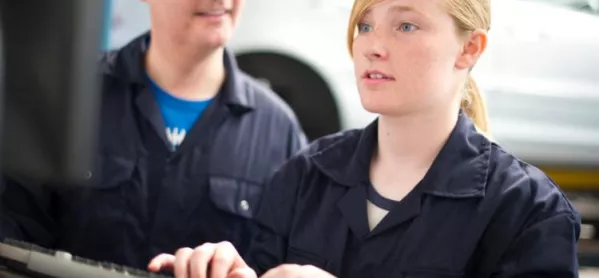
- Home
- ‘Stop looking at UTCs through the lens of the school system’
‘Stop looking at UTCs through the lens of the school system’

Research into 14-19 education is badly needed to understand better how all institutions recruiting at this age group are developing. The problem with the report published today by the Institute for Public Policy Research about UTCs and transition at 14 is that it looks at the UTC programme through the lens of the existing school system and its in-built resistance to innovation.
UTCs have been created to address the problem identified so often by employers - that the economy has a serious skills shortage and English schools are not producing anything like enough 18-year-olds able and willing to fill the gap. Putting on extra post-16 educational offerings will not address the skills gap, as you need more than two years to get students, with precious little technical education or skills pre-16, ready for level 3 courses and beyond. But children should not be asked to follow a specialised technical curriculum from the age of 11 and work a long school day. We decided that we should start around 13 to 14 (in common with much of Europe) when some pupils worked out where their interests might lie, and realised that the one-size-fits-all offer of mainstream secondary schools was not for them. So we created a new type of school, established where the skills are most needed, controlled by the employers and university, with a focussed technical curriculum admitting pupils at the non-standard age of 14 and going on for four academic years. UTCs are right for the child, right for the economy, but a bad fit with the education system.
‘Breaking through’
The single big point, which every observer including IPPR rightly seizes on, is that it is difficult to attract into UTCs a balanced intake of students at the end of KS3 at the age of 14. There is no doubt that transfer at 14 has proved harder to solve than we anticipated when we started in 2010.
But rather than throwing in the towel, as IPPR would like us to do, Baker Dearing Educational Trust has worked tirelessly to identify the refinements needed in the UTC model and overcome the shortcomings of our educational system which are holding UTCs back. We have recently started to break through.
The steps include a legal requirement that all local authorities should write to the parents of Year 9 children to tell them about their local UTC. Letters went out for the first time in February and March all over England. The number of applications for September is running at more than double the rate of this time last year. UTC Silverstone has seen an increase in applications from 98 to 197 from just March to May this year and at Aston University Engineering Academy there are 270 on their waiting list for Year 10 places.
In addition, the government has legislated to entitle UTCs to go into local schools from September to explain to the students the type of education that UTCs offer. We believe that this will lead to a further significant increase in the rate of applications at KS4.
‘Let’s celebrate UTC outcomes’
IPPR states that UTCs attract a comprehensive sample of students. This is incorrect. Although the intake in UTCs broadly mirrors that of the mainstream demographic (students in LA-maintained schools, academies and free schools) UTC students are less likely to come from the top 20 per cent of students nationally (measured by prior attainment at KS2). Our students are educated elsewhere during KS3 and have often made little progress when they join a UTC. Even so, we are proud of the education UTC students receive, and the progress they make while they are with us during KS4 and KS5.
IPPR takes no account of the outstanding destination data of UTCs. Of the 1,300 UTC leavers aged 18 in July 2016 only five were not in education, employment or training, whereas the national average unemployment rate at 18 is 11.8 per cent. 44 per cent went to universities from UTCs in 2016 - higher than the national average of mainstream schools, 29 per cent became apprentices - three times the level of mainstream schools and 15 per cent started a job.
In September five more UTCs will open recruiting in both KS4 and KS5, bringing the total number of open UTCs to 49. UTCs are not going anywhere, students and parents like them, employers want them and our economy needs them. We need lots of research into 14-19 schools, but then we need clever people to help us overcome the teething troubles we have had in the early years and embed UTCs in the English educational landscape. Let’s celebrate the fantastic outcomes for UTC students and be glad that at long last one small part of the school system is actually focussed on the needs of the economy.
Charles Parker is CEO of the Baker Dearing Educational Trust
Want to keep up with the latest education news and opinion? Follow TES FE News on Twitter, like us on Facebook and follow us on LinkedIn.
Register with Tes and you can read five free articles every month, plus you'll have access to our range of award-winning newsletters.
Keep reading for just £4.90 per month
You've reached your limit of free articles this month. Subscribe for £4.90 per month for three months and get:
- Unlimited access to all Tes magazine content
- Exclusive subscriber-only stories
- Award-winning email newsletters
You've reached your limit of free articles this month. Subscribe for £4.90 per month for three months and get:
- Unlimited access to all Tes magazine content
- Exclusive subscriber-only stories
- Award-winning email newsletters